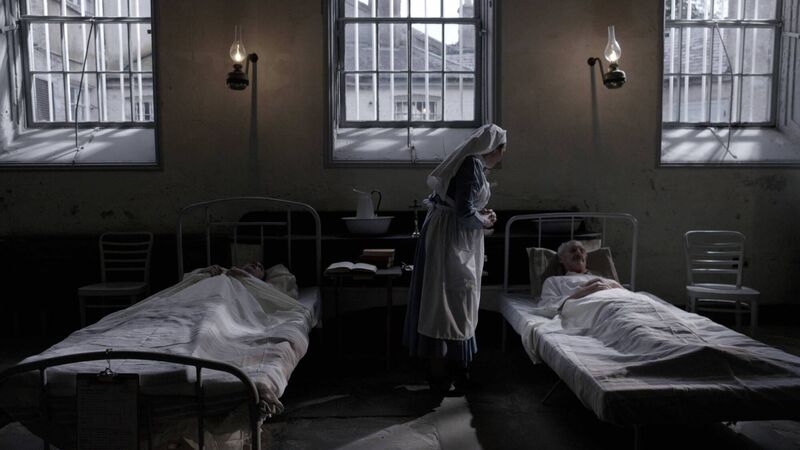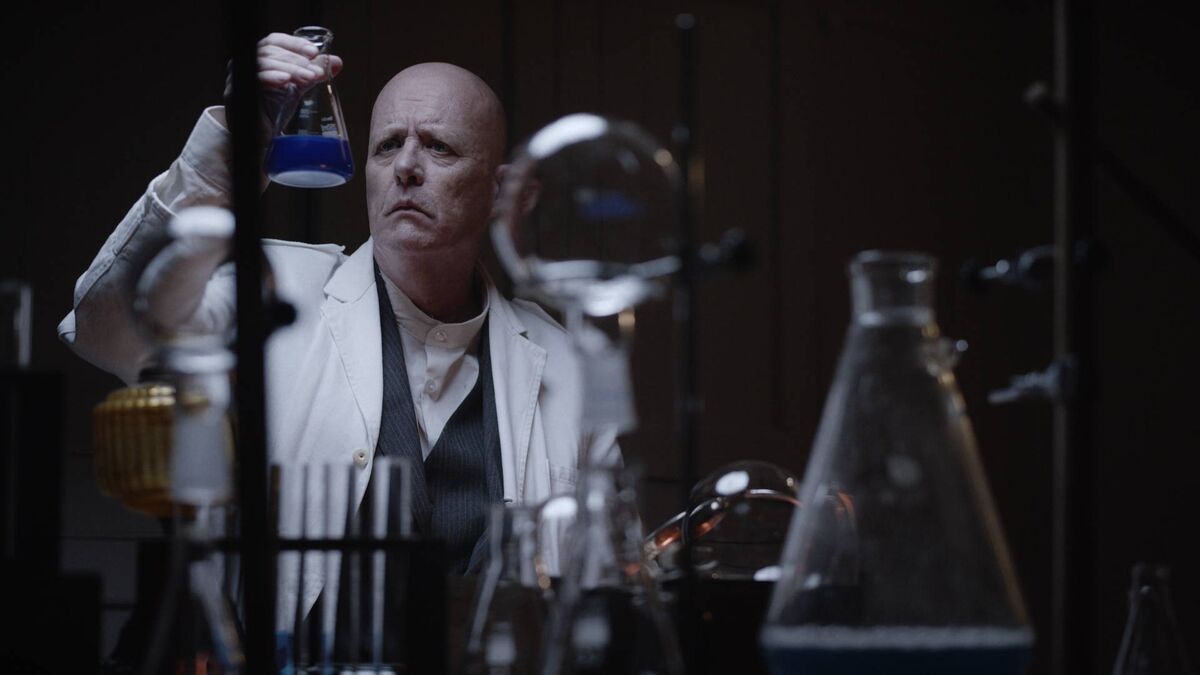Plagues of the past: What can our history teach us about dealing with Covid-19?

A scene from the new TG4 series, Eipidéím.
A new series exploring past epidemics in Ireland is set to hit our screens next week. Presented by historian Síobhra Aiken and GP Maitiú Ó Tuathail, will explore the devastating impact caused by diseases such as tuberculosis, polio, and smallpox.
The show’s creators are hoping the series will open up new conversations about how the world deals with epidemics and what we can learn from them.
“Epidemics are a part of life and in the past have had a big impact on life in Ireland,” says Aiken. “These histories remind us that epidemics are an inescapable feature of human existence and offer examples of how communities in the past have coped, endured and overcome many of the challenges we are facing today.”
Having fought on the frontlines of the Covid-19 pandemic, Dr Ó Tuathail was keen to learn more about how Irish people experienced past epidemics. “Until Covid-19, we had forgotten the fear that our ancestors felt towards widespread disease but that’s what life was like for generations of Irish people,” he says in episode one, which explores the impact of smallpox, cholera, and typhus.
All three diseases ripped through Ireland in the 18th and 19th centuries, killing thousands of people. The experts featured in the series say that smallpox was particularly feared, even in the 1960s, as around 30% of adults and 60% of children who contracted it died.
Cholera, meanwhile, has caused an estimated seven known epidemics worldwide, according to historian Dr Ida Milne. The main ones to affect Ireland, she says, struck in the 1830s, the late 1840s, and the 1860s, killing between 20,000 and 30,000 people each time.
In 1832, more than 1,500 people died from cholera in Co Sligo in the space of just six weeks. The event is thought to have influenced the writings of author Bram Stoker, who lived in an area where it was said locals were buried before they died to stop the spread of the disease.
“It affected people everywhere, but it hit the people on the margins worst,” Dr Milne says.
The link between socio-economic background and epidemics was something that series director and writer Ciara Hyland wanted to explore in .
“Irish people weren’t affected any more than anyone else. Epidemics are a thing that all of humanity has had to face. Wherever there is poverty or crowded, unsanitary, conditions that’s where you’ll really see rampant disease,” says Hyland. “We’re fortunate in Ireland that our living conditions have improved so much but there are so many places in the world that are still struggling with that.”

Typhus spread rapidly in Ireland in the 19th century due to such conditions, especially affecting poorer Irish emigrants living in Britain. “Epidemics affect the poorest and weakest people. The Irish in 19th century Britain were without doubt the poorest cohort,” says historian Tomás Mac Conmara.
This had a lasting impact, according to historian Niall Murray. “There was a higher incidence of the disease in coastal cities and when Irish people went to larger cities in Britain one can see from the statistics how the cases increased. The effect of this could be seen for many years afterwards in terms of negative attitudes toward the Irish.”
With a death rate of around 60%, more than 1.5m people were infected with typhus in Ireland from 1816 to 1819. Many doctors at the time wrote about the need for ventilation and social distancing; something still recommended for disease prevention today.
Along with the advent of bacteriology and the discovery that diseases could spread through water, seemingly simple steps were key to stopping past epidemics. “Things like clean water, cleaning up the slums; people didn’t even realise that germs caused disease,” says Hyland.
“That discovery was huge, and it led to vaccination, the implementation of which eliminated smallpox completely. Then there was the importance of social distancing, many things that we are implementing today that were learned the hard way.”
The second and final episode of the series examines the untold stories of tuberculosis, polio, measles, mumps, and rubella and concludes with an examination of the Covid-19 pandemic - the main source of inspiration for the series.
“Development started way back in March 2020. For most people, it was the first time they would go through an epidemic, but epidemics are nothing new in Irish history and that’s when that realisation really hit me,” says Hyland.
“Every disease we have overcome has taught us something new and added to our arsenal for coping with the current pandemic and for future ones that are likely to come. We’ll be learning lessons from Covid-19 for years and hopefully it will help us in the future.
“Researching how every epidemic ended inspired me and helped me get through lockdown. It’s important to remember that all epidemics do eventually end.”
Dr Ó Tuathail also believes there is reason to hope. “This pandemic, as well as those that have gone before, all follow a similar path,” he says. “We have come through epidemics and pandemics many, many times before. Each has had a massive impact and has shaped the world in its own way, much like this one will. I believe telling these stories will provide perspective, but also hope.”
- Watch Eipidéim on TG4 at 9:45pm, May 4 and 11

Celebrating 25 years of health and wellbeing








